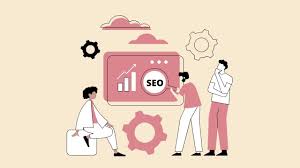What is Website?

A website is a collection of web pages or documents that are typically identified by a common domain name and are published on the World Wide Web. These pages are written in HTML (Hypertext Markup Language) and may contain various forms of media, such as text, images, videos, and interactive elements. Websites are accessible via the internet and are commonly used for a wide range of purposes, including personal expression, business promotion, information dissemination, and online communication.
Key components of a website include:
- Web Pages: Individual documents containing content, media, and other elements.
- Domain Name: A unique address that identifies a specific website on the internet (e.g., domain.name.com)
- Web Hosting: The service that stores and makes a website’s content accessible on the internet.
- Navigation Menus: Links and buttons that allow users to move between different pages on a website.
- Content: Information, images, videos, and other media that provide value to the website’s visitors.
- Design/Layout: The visual appearance and organization of the website, including colors, fonts, and overall structure.
- Interactive Elements: Features like forms, buttons, and multimedia that allow users to interact with the site.
- Responsive Design: Ensuring the website functions well and looks good on various devices, including desktops, tablets, and smartphones.
Table of Contents
9 Common Website Problems for Local Service Providers & How to Fix Them
Local service providers often face specific challenges when it comes to their websites. Here are nine common website problems for local service providers and suggestions on how to fix them:
Lack of Local SEO Optimization

- Problem: If your website is not optimized for local search, you might be missing out on potential customers in your area.
- Solution: Include local keywords in your content, meta tags, and headings. Claim your Google My Business listing and ensure accurate business information, including your location and contact details.
Poor Website Performance

- Problem: Slow-loading websites can lead to a high bounce rate, affecting user experience and search engine rankings.
- Solution: Optimize images, use a reliable hosting provider, and employ caching techniques. Regularly test your website’s speed using tools like Google PageSpeed Insights.
Unresponsive Design
- Problem: With the increasing use of mobile devices, having a website that is not mobile-friendly can drive away potential customers.
- Solution: Implement responsive design to ensure your website functions well on various devices. Google also prioritizes mobile-friendly websites in its search rankings.
Unclear Call-to-Action (CTA)

- Problem: Visitors may leave your site if they’re unsure about what action to take next.
- Solution: Clearly define your CTAs, whether it’s to call, fill out a form, or request a quote. Use contrasting colors and strategic placement to make CTAs stand out.
Outdated Content
- Problem: Stale or outdated content can negatively impact your website’s credibility and search engine rankings.
- Solution: Regularly update your website with fresh and relevant content. This could include blog posts, testimonials, or information about new services.
Ineffective Landing Pages

- Problem: If your contact information is incomplete or incorrect, potential customers may have difficulty reaching you.
- Solution: Double-check and update your contact information regularly. Ensure that your phone number, email address, and physical address are accurate and easy to find on your website.
Poor Social Media Integration
- Problem: Neglecting social media integration can limit your online presence and hinder your ability to engage with your audience.
- Solution: Include social media buttons on your website, share regular updates, and encourage customers to leave reviews. Engage with your audience on social media platforms to build a stronger online community.
Incomplete or Inaccurate Contact Information
- Problem: If your contact information is incomplete or incorrect, potential customers may have difficulty reaching you.
- Solution: Double-check and update your contact information regularly. Ensure that your phone number, email address, and physical address are accurate and easy to find on your website.
Neglecting Analytics

- Problem: Without tracking website analytics, you may miss valuable insights into user behavior and the effectiveness of your marketing efforts.
- Solution: Set up Google Analytics or another analytics tool to monitor website traffic, user behavior, and conversion rates. Use these insights to make informed decisions and continually improve your website’s performance.
By addressing these common issues, local service providers can enhance their online presence, improve user experience, and attract more customers from their target areas. Regularly monitoring and updating your website is crucial to staying competitive in the digital landscape.
What is it important to optimize my Website?
Optimizing your website is important for several reasons, as it can significantly impact your online presence, user experience, and overall success. Here are some key reasons why it is important to optimize your website:
- Search Engine Visibility:
- Search engine optimization (SEO) helps your website rank higher in search engine results pages. This increased visibility makes it more likely that potential customers will find your site when searching for relevant products or services.
- User Experience Improvement:
- Optimization enhances the user experience, making it easier for visitors to navigate your site, find information, and complete desired actions (e.g., making a purchase or filling out a contact form). A positive user experience contributes to customer satisfaction and retention.
- Mobile Responsiveness:
- With the growing use of mobile devices, optimizing your website for mobile responsiveness is crucial. Responsive design ensures that your site looks and functions well on a variety of devices, improving accessibility for users on smartphones and tablets.
- Faster Page Load Times:
- Website optimization includes strategies to improve page load times. Faster loading pages enhance user satisfaction and contribute to lower bounce rates. Search engines also consider page speed as a ranking factor.
Conclusion
In conclusion, a website is a crucial component of the digital landscape, serving as a platform for individuals, organizations, and businesses to establish an online presence and communicate with a global audience. It is a collection of web pages accessible through the internet, typically identified by a unique domain name. Websites are diverse and can serve various purposes, such as sharing information, promoting products or services, enabling online interactions, and expressing personal or professional interests.
To be effective, websites must address common challenges, especially for local service providers. These challenges include optimizing for local search, ensuring mobile responsiveness, providing clear calls-to-action, and regularly updating content. Additionally, social media integration, accurate contact information, and the use of analytics are essential for maximizing a website’s impact and success.
If you want to buy a hosting: Hosting.
